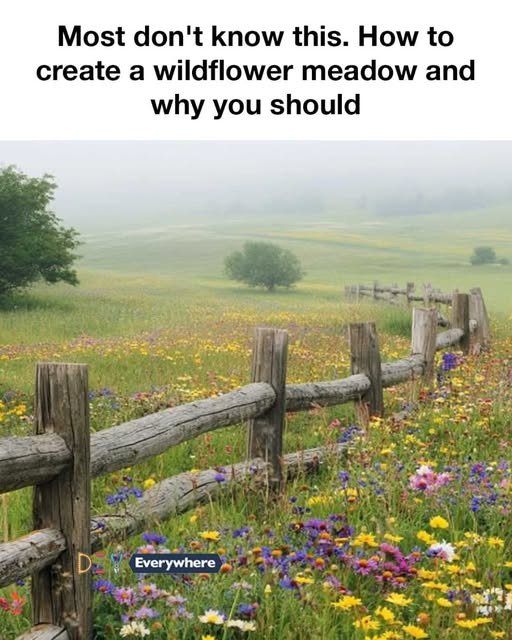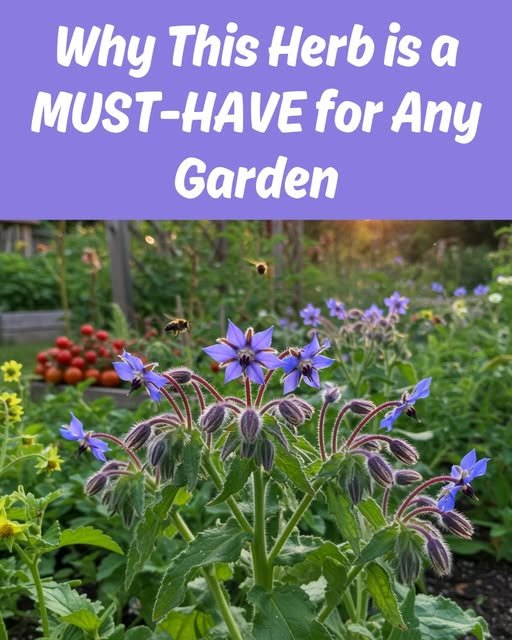In recent years, the concept of creating wildflower meadows has gained popularity among gardeners and environmentalists alike. These vibrant landscapes not only enhance the aesthetic appeal of gardens but also offer a multitude of environmental benefits. However, many people are unaware of how to start their own wildflower meadow or why they should consider doing so.
Wildflower meadows are not just for rural areas; they can be integrated into urban settings, providing a natural oasis amidst concrete jungles. By understanding the steps involved in creating and maintaining a wildflower meadow, anyone can contribute to biodiversity and environmental health right in their backyard.
1. The Environmental Benefits of Wildflower Meadows
Wildflower meadows play a crucial role in carbon sequestration, helping to mitigate climate change. They capture and store carbon dioxide from the atmosphere in their plant biomass and soil. According to studies, grasslands, including wildflower meadows, can sequester approximately 1.7 tons of carbon per hectare per year.
Moreover, these meadows improve soil health by enhancing soil structure and fertility. The diverse root systems of wildflowers help prevent soil erosion and increase water infiltration, reducing the risk of flooding. By supporting a wide range of plant species, wildflower meadows also promote nutrient cycling, making them a sustainable choice for land management.
2. How Wildflower Meadows Support Biodiversity
Wildflower meadows are biodiversity hotspots, supporting a wide array of plant and animal species. They provide habitat and food for pollinators such as bees, butterflies, and moths, which are essential for the pollination of many crops and wild plants.
These meadows also offer shelter and breeding grounds for various insects, birds, and small mammals. A single meadow can support hundreds of different species, contributing to the overall health of the ecosystem. By creating a wildflower meadow, you are helping to preserve endangered species and promote ecological balance.
3. Choosing the Right Location for Your Meadow
Selecting the right location for your wildflower meadow is crucial for its success. Ideally, choose an area that receives full sunlight for at least six hours a day, as most wildflowers thrive in sunny conditions.
Consider the soil type and drainage of the area. Wildflowers generally prefer well-drained soils, so avoid areas prone to waterlogging. If possible, select a location that is away from invasive plant species, as they can outcompete native wildflowers.
4. Selecting the Best Wildflower Species for Your Area
When selecting wildflower species for your meadow, it’s important to choose native plants that are adapted to your local climate and soil conditions. Native species are more likely to thrive and support local wildlife.
Consult local gardening centers or native plant societies for recommendations on the best species for your area. Consider a mix of annuals and perennials to ensure continuous blooms throughout the growing season. Popular choices include black-eyed Susans, coneflowers, and lupines.
5. Preparing the Soil for Planting
Proper soil preparation is key to establishing a successful wildflower meadow. Start by removing any existing vegetation, such as grass or weeds, to reduce competition for resources.
Loosen the soil to a depth of about 6 inches using a rototiller or garden fork. This will improve soil aeration and drainage. If necessary, amend the soil with organic matter, such as compost, to enhance fertility. Conduct a soil test to determine pH levels and adjust accordingly, as most wildflowers prefer slightly acidic to neutral soils.
6. Planting Techniques for a Successful Meadow
There are several planting techniques you can use to establish your wildflower meadow. One popular method is broadcasting seeds by hand, ensuring even distribution across the area. For larger meadows, consider using a seed spreader.
After sowing, lightly rake the soil to cover the seeds with a thin layer of soil. Water the area gently to ensure good seed-to-soil contact. Be patient, as wildflower meadows can take a few seasons to fully establish.
7. Popular Viral Hacks for Meadow Maintenance
Maintaining a wildflower meadow doesn’t have to be labor-intensive. One viral hack is to mow the meadow once a year in late summer or early fall after the flowers have set seed. This helps to control woody plants and encourages reseeding.
Another tip is to introduce beneficial insects, such as ladybugs, to control pest populations naturally. Additionally, consider using organic mulch to suppress weeds and retain soil moisture.
8. The Role of Pollinators in Wildflower Meadows
Pollinators are vital to the health of wildflower meadows. They facilitate the reproduction of flowering plants by transferring pollen from one flower to another, leading to seed production.
By attracting a diverse range of pollinators, wildflower meadows enhance genetic diversity among plant species. This, in turn, strengthens the resilience of the ecosystem, making it more adaptable to environmental changes.
9. Seasonal Care and Management Tips
Seasonal care is essential for maintaining a thriving wildflower meadow. In spring, monitor for early weed growth and remove invasive species promptly.
During summer, ensure the meadow receives adequate water, especially during dry spells. In fall, mow the meadow to a height of 4-6 inches to encourage seed dispersal and prepare the plants for winter dormancy.
10. Common Mistakes to Avoid When Creating a Meadow
One common mistake is overwatering, which can lead to root rot and fungal diseases. Wildflowers are generally drought-tolerant and require less water than traditional lawns.
Avoid using chemical fertilizers and pesticides, as they can harm beneficial insects and disrupt the natural balance of the meadow. Instead, focus on organic practices to promote a healthy ecosystem.
11. Why Every Garden Should Have a Wildflower Meadow
Wildflower meadows offer numerous benefits that make them a valuable addition to any garden. They provide a habitat for wildlife, enhance biodiversity, and contribute to environmental sustainability.
Moreover, wildflower meadows require less maintenance than traditional lawns, reducing the need for mowing, watering, and chemical inputs. By creating a wildflower meadow, you can enjoy a beautiful, low-maintenance landscape that supports the health of the planet.



